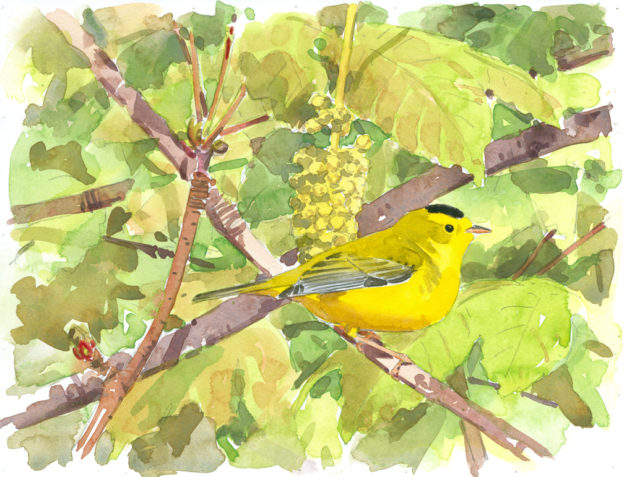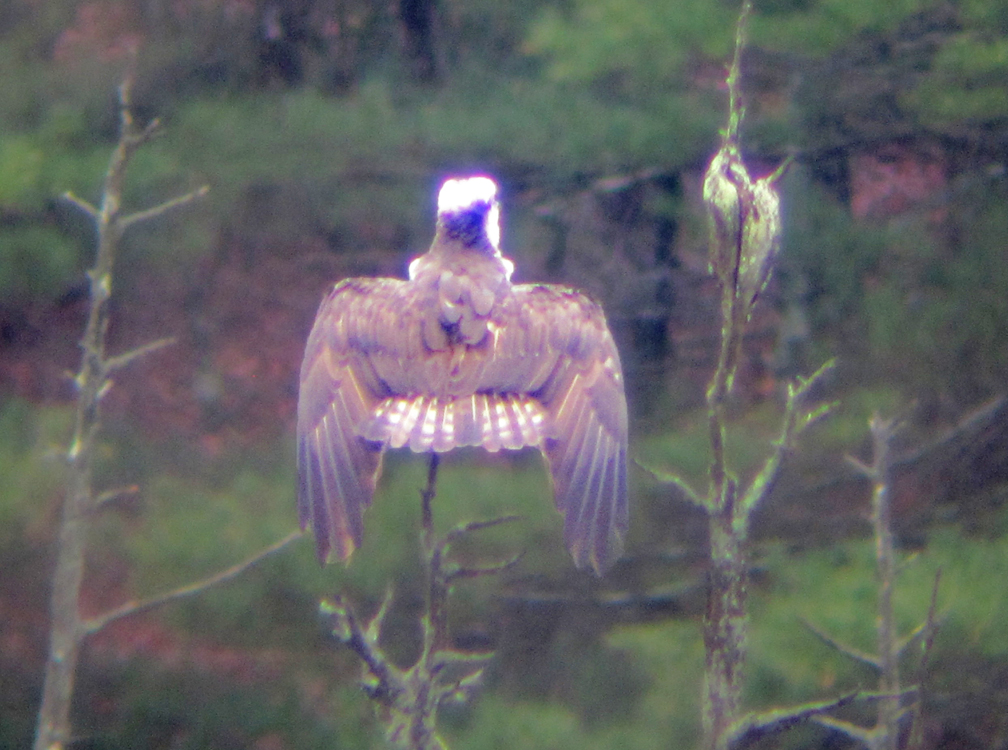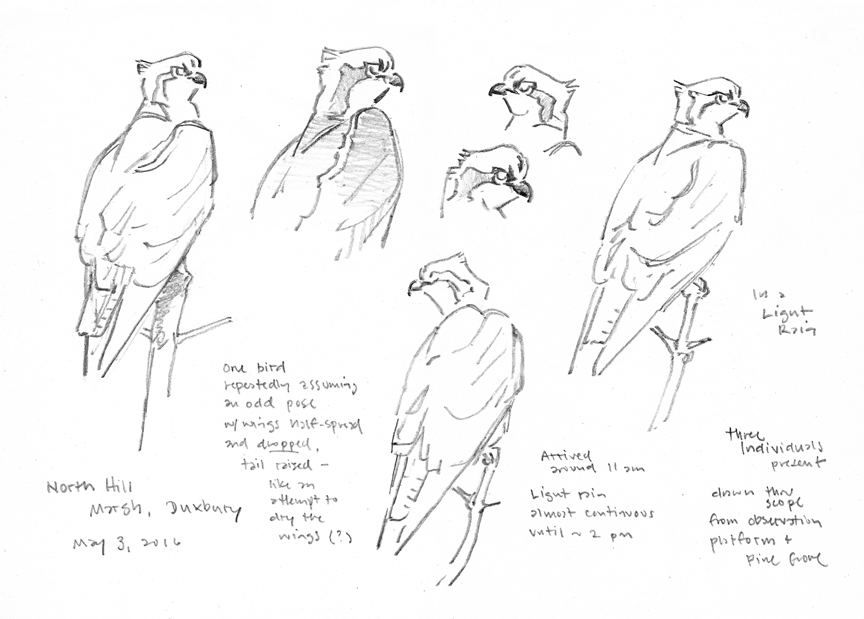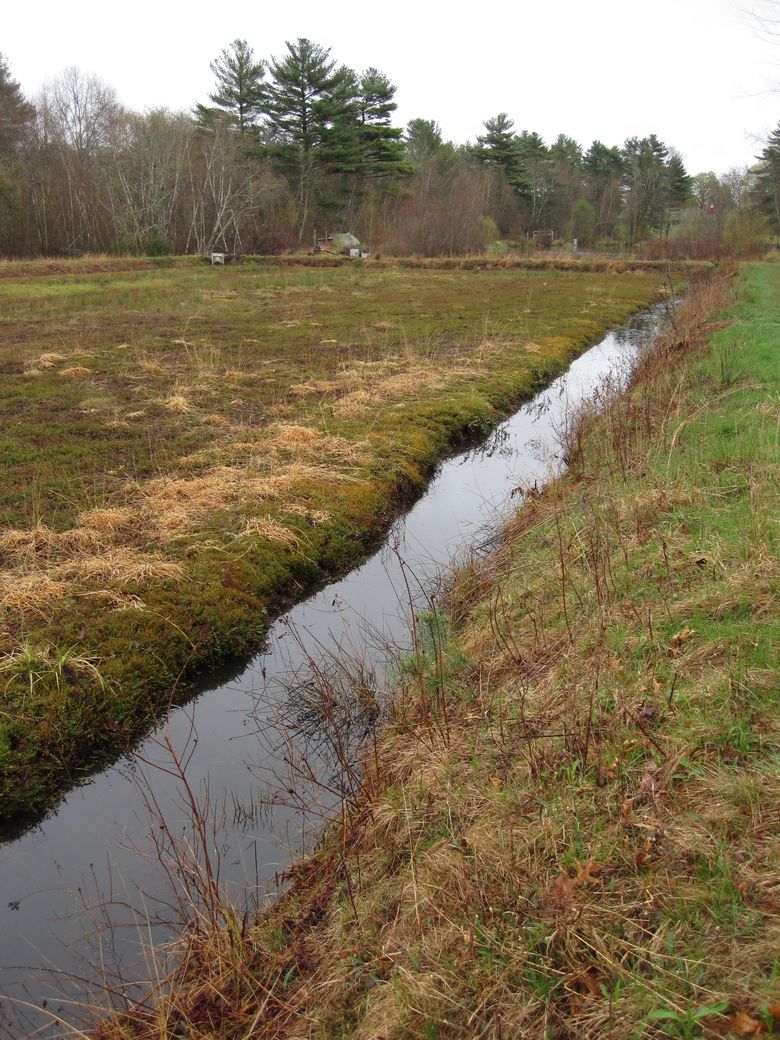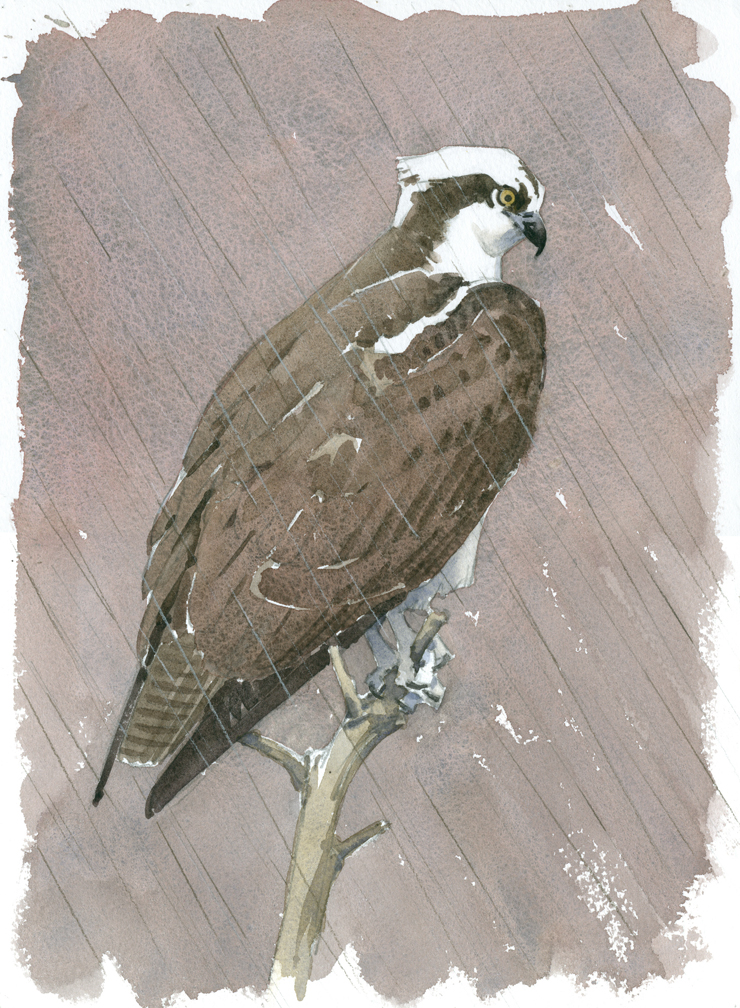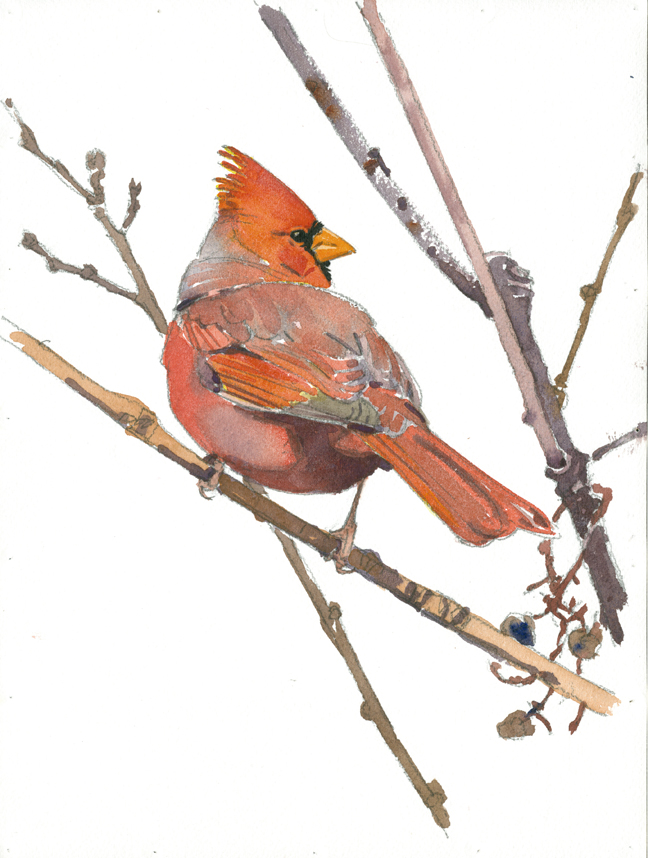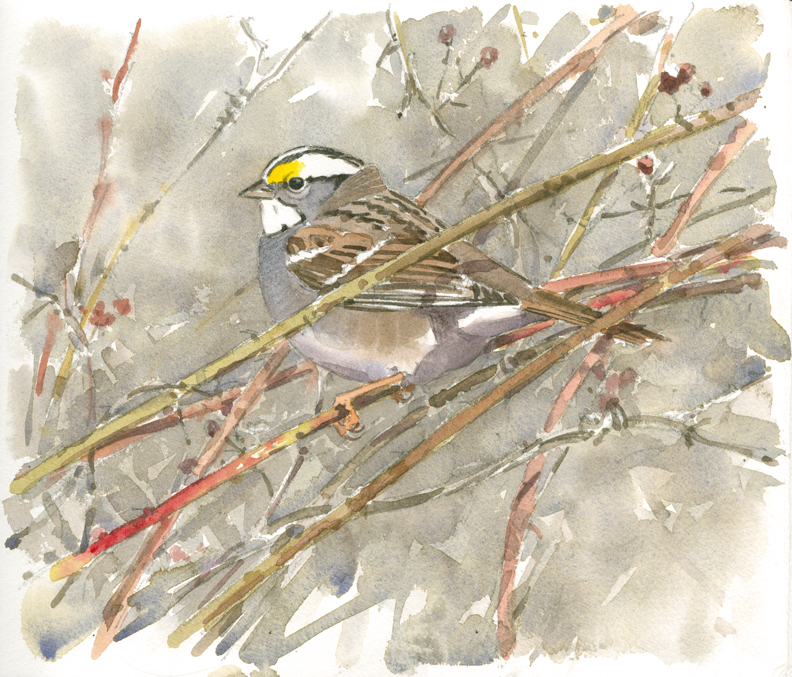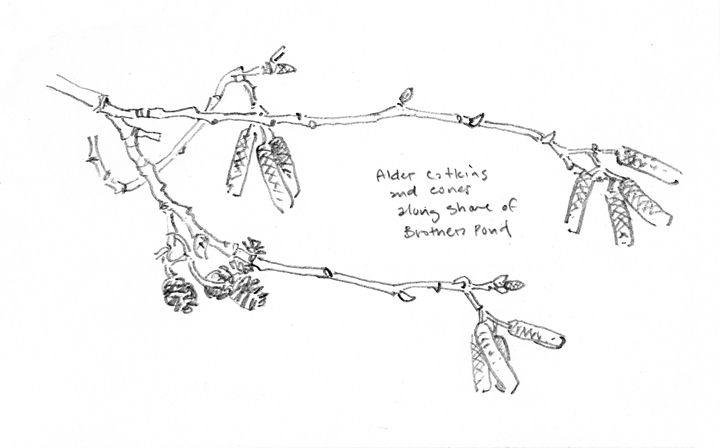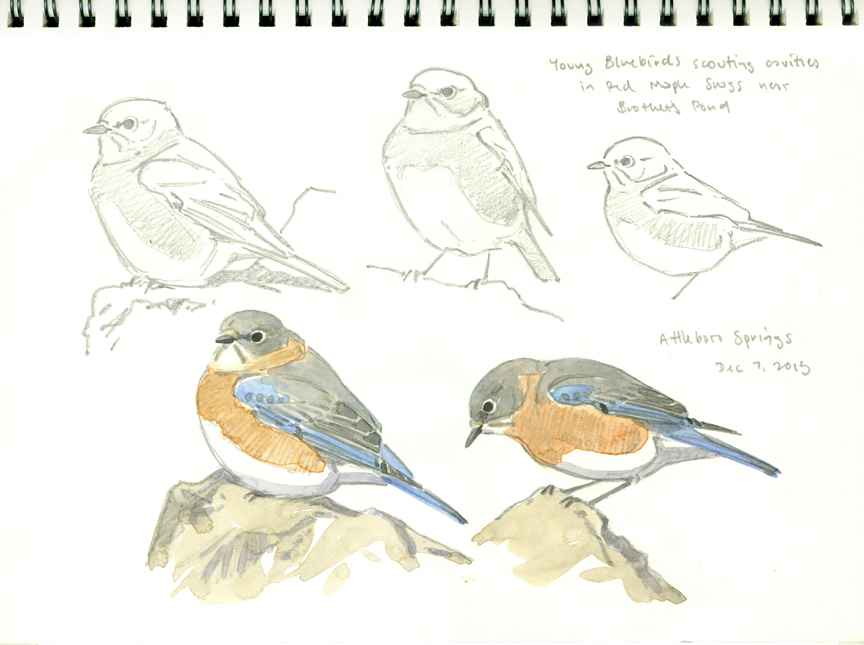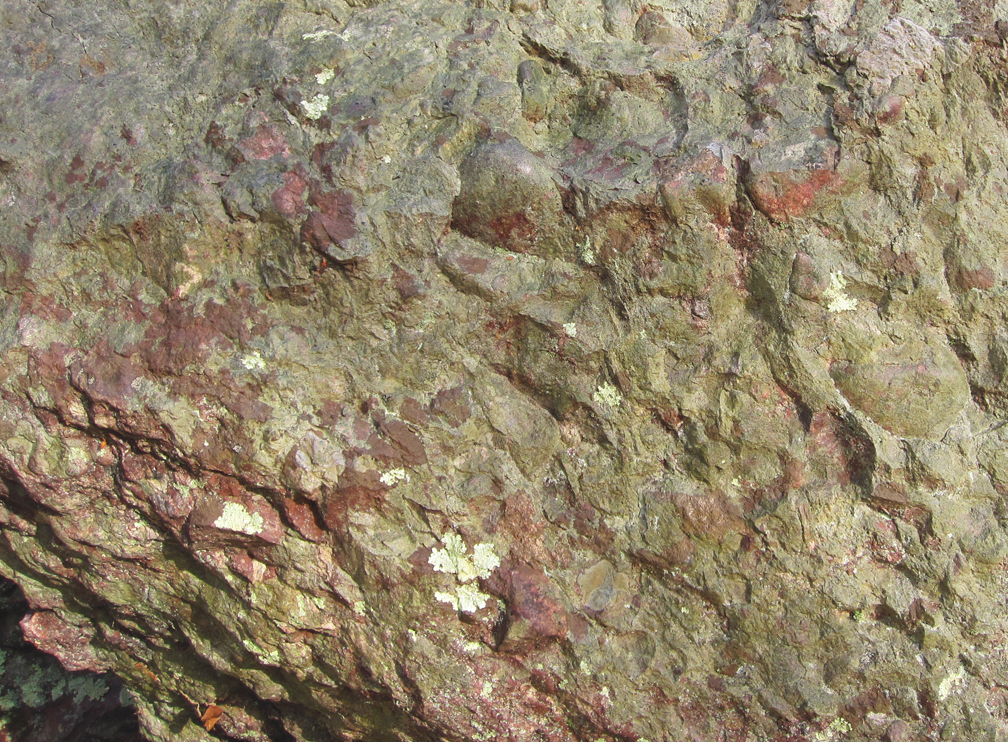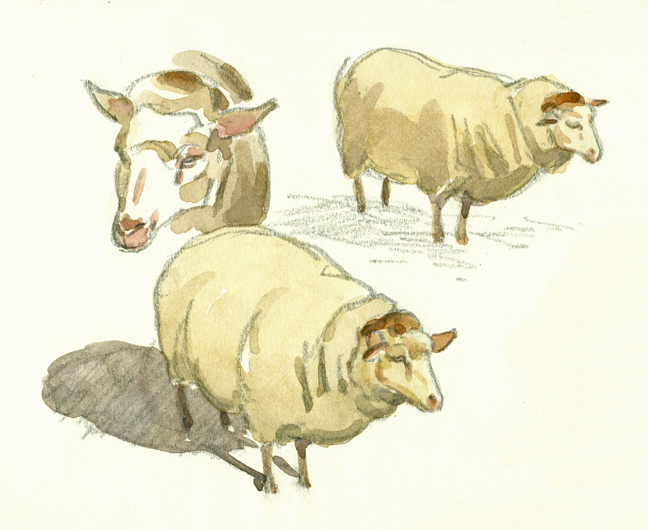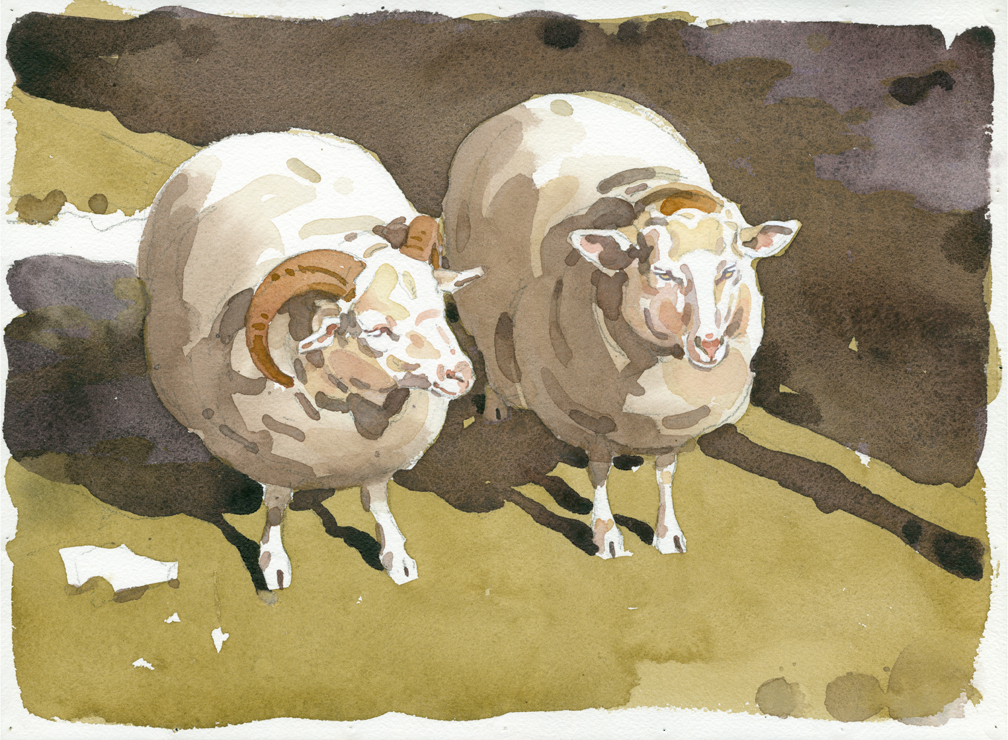May 20, 2016
Nahant Thicket Wildlife Sanctuary, Nahant
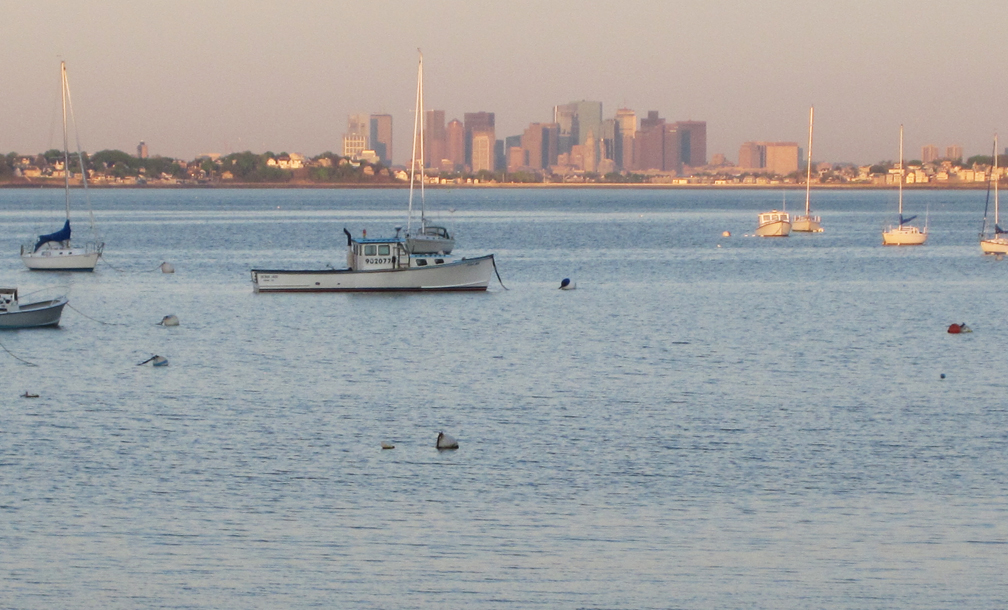
The sun is just rising out of the sea and lighting up the tops of Boston’s skyscrapers as I drive over the causeway to Nahant. It is 5 am.
Nahant Thicket is the smallest of the Mass Audubon sanctuaries at only 4 acres. A walk down the sanctuary trail is over before it begins, so I poke along slowly, looking and listening.

Wilson’s warbler sketchbook page, pencil and watercolor, 9″ x 12″
A Wilson’s warbler sings from a willow. I recognize the song from that little trill at the end that drops in pitch. I haven’t sketched a Wilson’s in a long while, so I spend some quality time with the bird, following it as it moves from tree to tree. The little black cap on top of its head seems to puff up slightly (my wife thinks it looks like a yarmulke!)
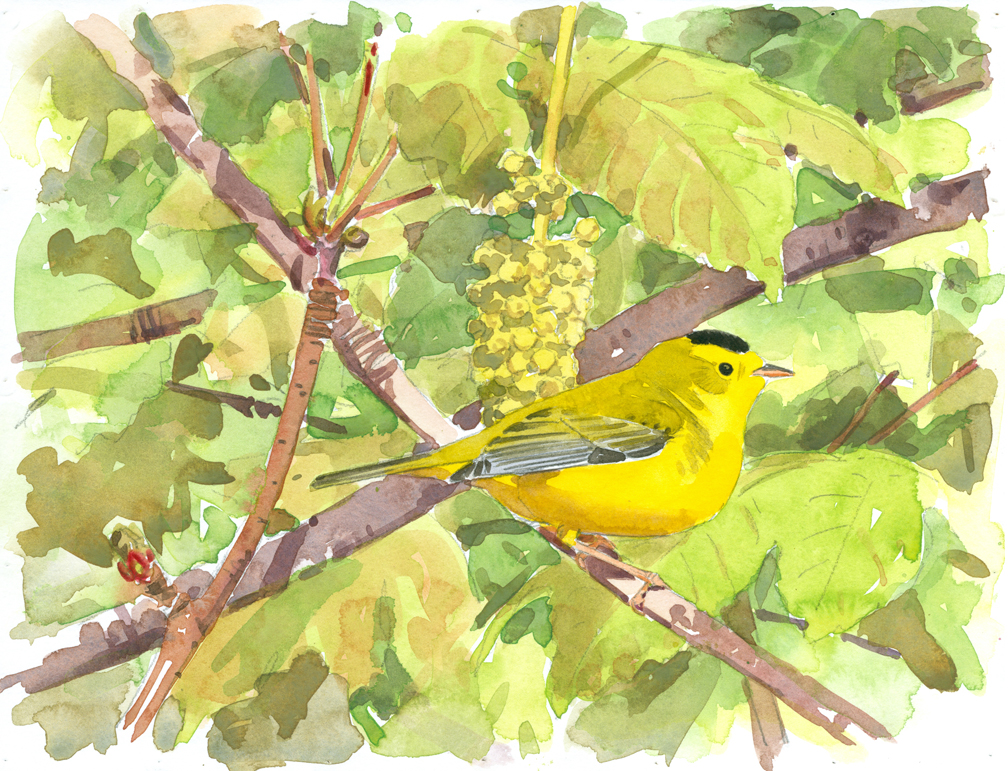
Wilson’s Warbler, watercolor on Fluid 100 coldpress, 9″ x 12″
The thicket is bisected by a ditch or channel of fresh water, and I pause on the wooden bridge to watch a thrush bathing along the water’s edge.
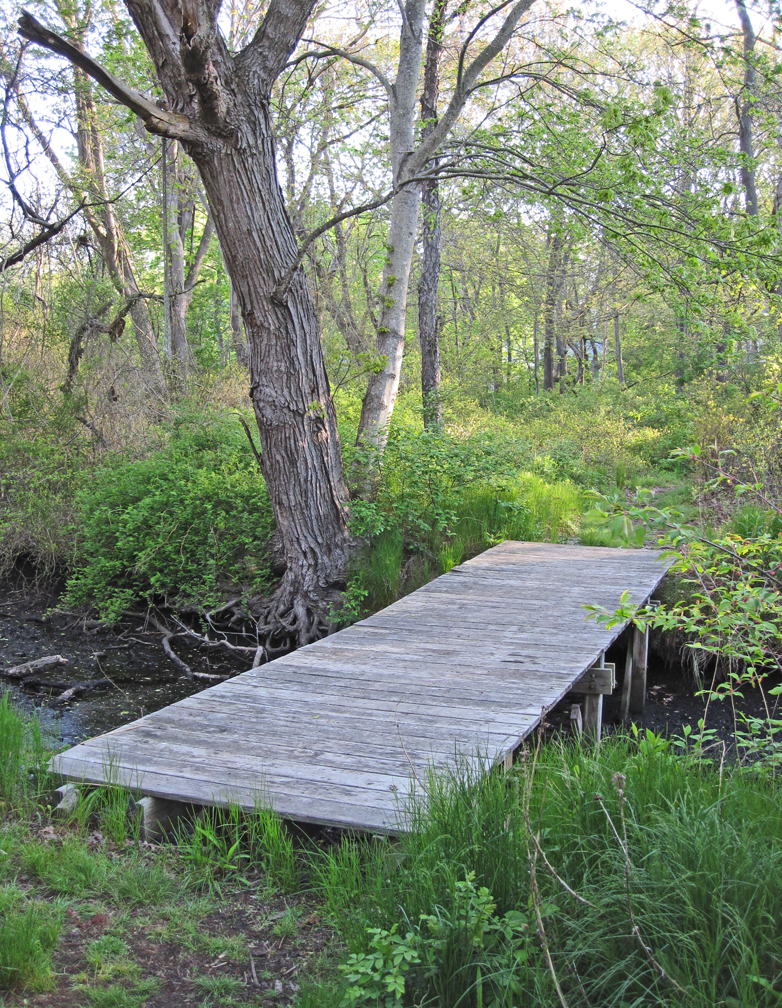
A northern waterthrush sings nearby, and from deeper in the undergrowth a bird delivers bursts of a rapid staccato song. A year ago I heard that same song along the Waterthrush Trail at High Ledges Wildlife Sanctuary in Shelburne. It’s a Canada warbler, which fills another page in my sketchbook…
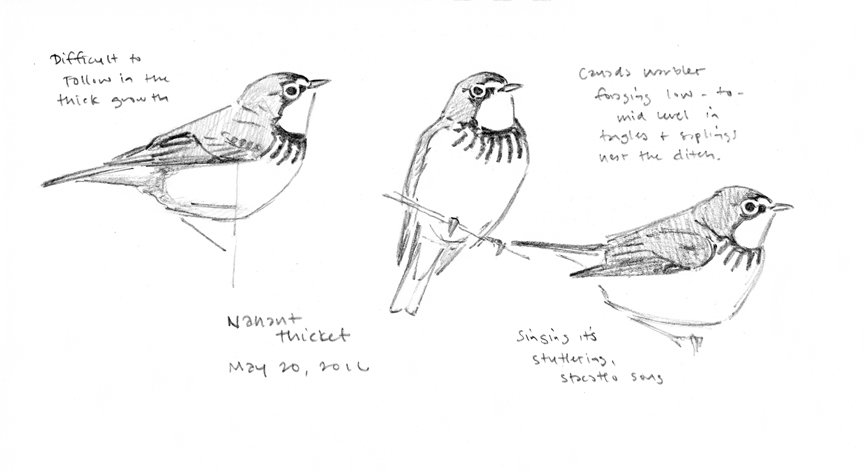
Canada Warbler sketches, pencil, 6″ x 11″
The same species of warblers that were abundant at Marblehead Neck yesterday are numerous again today at Nahant Thicket: redstarts, northern parulas, magnolias and black-and-whites. But I add some new species, too, including a yellow warbler and a black-throated blue.

Sketchbook study, pencil, 8″ x 5″

Northern Parula in Oaks, watercolor on Winsor & Newton cold-press, 9″ x 10.5″
By 9:30 am the neighborhood is waking up and along with it come the myriad sounds of humanity: lawn mowers, a garbage truck making the rounds, leaf blowers, and the general banging and slamming that seems a constant daytime sound in any busy neighborhood. It’s time for me to migrate home…


